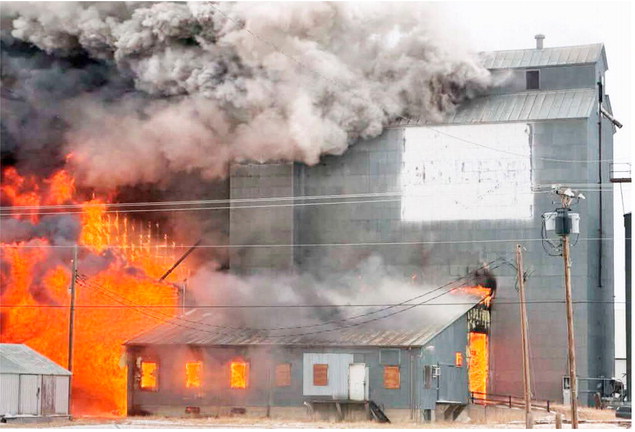Tribal Colleges Have Baseline Funding After Uncertainty
Tribal colleges in Montana will receive more federal dollars for the 2025 fiscal year after initial “confusion” and “uncertainty” around funding.
“We were freaking out,” said Stone Child College President Cory Sangrey-Billy.
Montana has seven tribal colleges out of the 35 in the country — the most of any state.
The schools together are estimated to receive $108 million, or roughly double last year’s allocation, said Sangrey-Billy.
“It’s quite a significant jump,” she said.
Now, budget planning is underway at Stone Child in Box Elder and other tribal colleges in Montana.
And tribal education leaders in Montana are touting the results of an economic impact study that shows the federal investment pays dividends to taxpayers.
The report, from the American Indian Higher Education Consortium, said tribal colleges in Montana added $332.2 million in income to the economy in the 2022-2023 fiscal year.
“There is a value to what we bring to the table,” Sangrey-Billy said. “And that’s where we’ve been very successful.”
Based in Alexandria, Va., the American Indian Higher Education Consortium has a mission to amplify the voices of tribal-led colleges and universities.
A message on its website said it applauds the Trump administration’s increased investment in Tribal Colleges and Universities.
“This one-time allocation by the federal government for Fiscal Year 2025 is progress towards fulfilling federal trust and treaty obligations to Tribal Nations as intended and a welcome new precedent in increased investment into TCUs,” the consortium said.
The consortium also said some of the increase comes from dollars that were cut from other federal programs supporting Native American and Alaska Native students at non-tribal colleges.
It encouraged a federal commitment to support all Native students “wherever they pursue post-secondary learning.”
Montana Tribal Colleges and Universities consist of Aaniiih Nakata College on the Fort Belknap Indian Reservation; Blackfeet Community College; Chief Dull Knife College on the Northern Cheyenne Indian Reservation; Fort Peck Community College; Little Big Horn College on the Crow Indian Reservation; Stone Child College on the Rocky Boy’s Indian Reservation; and Salish Kootenai College on the Flathead Indian Reservation.
Stone Child does not have the funds in hand yet and is also waiting to see the constraints on spending, Sangrey-Billy said. She said the money could be allocated for infrastructure, for example — and Stone Child is in need of a new roof. It also could be designated for assessment and education, she said — such as to support student retention by paying for tutors and mentors.
Either way, she said, college leaders are thrilled with the additional money — and pleased to report the return on investment to the community.
The economic impact report, “Building Local Economies of Scale,” measures both the economic impact of tribal colleges in Montana and their returns on investment to students, taxpayers and society.
One of the impacts that resonated with Sangrey-Billy included payroll of $47.1 million — “much of which was spent in the state on groceries, mortgage and rent payments, dining out, and other household expenses,” the report said.
Sangrey-Billy said shopping options are limited near the college on the Rocky Boy’s Indian Reservation with 213 enrolled.
“We can only get a few groceries out there so we have to go to Havre (or Great Falls). The economic impact that we have there is big,” she said.
The report also said TCUs generate more in national tax revenue than they receive. It said for every $1 of public money invested in Montana’s tribal colleges, national taxpayers receive $1.40 over the course of a student’s life, and state taxpayers receive $12.40.
It estimated the social benefits to society at $500.8 million through a mix of added student income of $337.1 million, added business income of $135.6 million, and avoided costs of $28.11 million.
Brad Hall, president of Blackfeet Community College in Browning, said tribal colleges are “a good investment,” but changes in the White House can mean changes in objectives.
He said that means tribal college leaders need to educate new administrations about their value. He just returned from Washington, D.C., where he met with federal leaders in education and found them receptive.
“Now that we’re getting to the table and talking more, there’s a willingness to hear what we absolutely need,” Hall said. “A lot of the people we’re working with have never really worked with tribal colleges or were aware of that.”
One issue that’s caused confusion, he said, is that tribal colleges are not DEI programs — the Trump administration has moved to roll back diversity, equity and inclusion efforts.
Hall said the colleges are tribally chartered campuses in which the federal government has a fiduciary and trust responsibility to help maintain.
“The advocacy just takes time, but I can tell you with certainty we do have our baseline funding, and it’s just that this year was harder to budget for because we didn’t have the certainty that we normally have in budget cycles,” Hall said. He too pointed to the results of the economic impact study from the American Indian Higher Education Consortium, conducted in partnership with Lightcast. The report said Lightcast provides colleges and universities with labor market data to help create better outcomes for students, businesses and communities.
In Montana, tribal college alumni generated $258.6 million in added income for the state in the 2022-2023 fiscal year, or the equivalent of 4,017 jobs, for instance, the report said.
“We’re not institutions that just take,” Hall said. “We’re institutions that are absolutely vital and contributing to the communities that we serve.”

